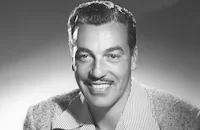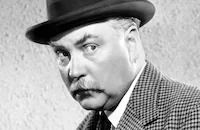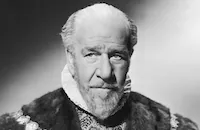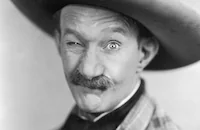Julia Misbehaves

Brief Synopsis
Cast & Crew
Jack Conway
Greer Garson
Walter Pidgeon
Peter Lawford
Elizabeth Taylor
Cesar Romero
Film Details
Technical Specs

Synopsis
In 1936, when London showgirl Julia Packett receives an invitation in the mail for the wedding of her daughter Susan, she reveals to her antique-dealer friend, Benjamin "Benji" Hawkins, that years before she married a wealthy man. She explains that he returned from the war, they separated, and because of his family's position, she was forced to leave the baby with them. Sensing that Julia, for once, is being sincere, the long-suffering Benji finances her trip, and she sets out for the family estate in the South of France. When Julia's husband William receives her telegram, he and his mother are shocked that Julia somehow received an invitation, and Mrs. Packett implores William to intercept Julia in Paris. Meanwhile, on the boat to France, Julia meets Fred Ghenoccio, who heads an acrobatic troupe with his mother and five brothers. Because Julia accidentally starts the champagne-loving Ma Ghenoccio on a bender, Julia agrees to take Ma's part in the act when it plays in Paris and sends William a telegram saying that she cannot meet him. With nothing to do, William goes to a show and is pleasantly surprised to see Julia in the Ghenoccio act. She is such a hit with the audience that Freddie asks her to join their troupe and proposes as her train leaves. When Julia arrives at the Packett home, her mother-in-law tells her that the invitation was a mistake and suggests that she leave to avoid embarrassment, but Julia insists on seeing Susan first. When Susan meets Julia, she reveals that it was she who sent the invitation and begs her to stay. Now wanting to buy Susan presents for all of the Christmasses she missed, Julia goes to the local casino. She loses, but meets Colonel "Bunny" Willowbrook, who, unknown to Julia, is a friend of William. Telling Bunny a phony story about losing her luggage, she tricks him into giving her 6,950 francs, which she uses to pay for Susan's gifts, then sneaks out of the store. When William returns to the house, he is secretly happy to discover that Julia is staying. That night, at the wedding rehearsal, Julia meets Ritchie Lorgan, a young artist whom William has hired to paint murals, and senses an attraction between him and Susan. When Julia and William happily reminisce about their own wedding, Susan gets the idea that they should get back together. Later, Susan tells Julia that Ritchie has kissed her and said that he loves her. Next morning, Julia suggests a picnic to William, who is eager, but chagrined to have Susan included. To keep Susan company, William invites Ritchie, and at the lodge where Julia and William spent their honeymoon, the two couples split up. While Ritchie and Susan are kissing in the woods, William and Julia fall into the lake and are forced to change clothes in the cabin. There they reminisce about their honeymoon and dance, then kiss, until Susan and Ritchie interrupt them. Back at the estate, Mrs. Packett is overjoyed when Freddie arrives, proclaiming that he is Julia's fiancé, and assures him that Julia and William are married in name only. She then invites him and Ma to stay the night. That evening, Susan is nervous and Julia suggests that she elope "with the man she loves." William then "proposes" to Julia, but she is angry as he uses almost the same words as he did years before when he asked for the separation. Just then Mrs. Packett brings in Freddie and Ma, and Julia pretends to be delighted to introduce her fiancé. In the middle of the night, William goes to Julia's room, but is seen by Freddie and an argument ensues among the entire household. William then goes to the casino and runs into Bunny, who relates his recent women troubles. William soon realizes that Julia is the woman and suggests a ruse. At breakfast the next morning, William apologizes to Freddie, and at that moment, Bunny arrives, pretending not to know William and accusing Julia of stealing his 6,950 francs. Although William feigns sympathy for Julia, Freddie is shocked with the sordid details and leaves. Then Mrs. Packett comes in and warmly greets Bunny, alerting Julia to William's deception. Just then, a note from Susan arrives saying that she and Ritchie are being married at the lodge. William drives after them, followed by Julia, but at the lodge, there is another note, saying that they are already married and on their way to England. As their cars are driven off by the servants, Julia and William read the rest of the note,which says that they have forty-eight hours alone to admit their love. Julia angrily walks out, despite a raging storm, but William eventually follows and as they both land in a mud puddle, they laugh hysterically.

Director

Jack Conway
Cast

Greer Garson

Walter Pidgeon

Peter Lawford

Elizabeth Taylor

Cesar Romero

Lucile Watson

Nigel Bruce

Mary Boland

Reginald Owen

Henry Stephenson
Aubrey Mather

Ian Wolfe

Fritz Feld

Phyllis Morris

Veda Ann Borg
Edmond Breon
Marcelle Corday
Winifred Harris
Ted Dewayne
Henry Monzello
William Snyder
Ray Saunders
Michael Kent
Elspeth Dudgeon
Stanley Fraser
Connie Leon
Almira Sessions
James Logan
James Fairfax
Harry Allen
Cyril Thornton

James Finlayson
Victor Wood
Herbert Wyndham
Sid D'albrook
Jimmy Aubrey
Roland Dupree
Alex Goudovitch
Andre Charlot
Joanee Wayne
Mitchell Lewis
Jean Del Val
Albert Pallet
Ottola Nesmith
Nan Boardman
Torben Meyer
George Volck
Kay Norton
Fern Eggen
Candy Toxton

Lola Albright
Marjorie Jackson
Gail Langford

Joy Lansing
Elaine Sterling

Ruth Hall
Patricia Walker
Shirley Ballard
Alphonse Martell
Bertha Feducha
Art Foster
George Goldsmith
Dave Thursby
Crew
Jack Aldworth
Leslie Alleyn
Virgil Apger
Hal Borne
Daniel B. Cathcart
Jack Dawn
Adolph Deutsch
John Dunning
Herbert Fischer
Cedric Gibbons
Ferde Grofé
Sydney Guilaroff
Monckton Hoffe
Irene
Gina Kaus
William Ludwig
Leo Monlon
Jack D. Moore
Marshall Neilan
Warren Newcombe
Tony Ordoqui
Everett Riskin
Harry Ruskin
Joseph Ruttenberg
Jerry Seelen
Douglas Shearer
Ralph Stanley
Walter Strohm
Marvin Stuart
Dorothy Terris
Charles E. Wallace
Paul Whiteman
Edwin B. Willis
Arthur Wimperis

Videos
Movie Clip





Trailer
Hosted Intro
Film Details
Technical Specs

Articles
Julia Misbehaves
Greer Garson had arrived in Hollywood with a bang in 1939's Goodbye, Mr. Chips and throughout the 1940s starred in MGM's high-brow films, co-starred with "class acts" like Ronald Colman, Laurence Olivier, and her most frequent partner, Walter Pidgeon. Audiences saw her as Elizabeth Bennet in Pride and Prejudice (1940) or the noble, wartime English mother, Mrs. Miniver (1942). Now it was 1948. World War II was over, the world had changed, and so had audience tastes. Seeing a decline of Garson's films at the box-office (her last picture Desire Me, 1947, co-starring Robert Mitchum, had had three directors who all refused to allow their name to be put on the film), the studio once again decided to thaw the ice-queen. The film chosen was Julia Misbehaves, based on the 1937 novel The Nutmeg Tree by Margery Sharp, which had also been a Broadway play starring Gladys Cooper. In it, Garson plays a madcap actress who abandoned her husband and child and returns, years later, to attend her daughter's wedding. In the film, Garson is seen in a bubble bath, as part of a tumbling act with a Cockney-voiced Cesar Romero, and conning Nigel Bruce out of enough money to buy her daughter a wedding present. Playing the abandoned husband was the reliable Pidgeon in his sixth film with Garson; her ex-mother-in-law is played by Lucile Watson (the great Canadian character actress who seemed to make a career out of playing disapproving mothers-in-law); the soon-to-be-wed daughter is played by Elizabeth Taylor (fresh from the set of A Date with Judy, 1948), and Taylor's fiancé is played by Peter Lawford (MGM's reigning heart-throb).
If Garson's star was on the wane, then Taylor's was on the ascent. Having scored a huge hit with National Velvet (1944) only four years before, she was now transitioning from child-star to ingénue. For Taylor, Julia Misbehaves would be a memorable shoot for two reasons: she would receive her first on-screen kiss (from Lawford); and she turned sixteen during production on February 27, 1948. As Alexander Walker wrote in his Taylor biography Elizabeth, "She spent the night of her birthday dancing at the Coconut Grove, arriving in a white mink...Her parents' gift was a powder-blue Cadillac with a gold-plated ignition key. Once the photos had been taken, she considerately handed it back to them. She would stick with the old open-top Ford she had been given a couple of years ago. Rich but unspoilt was the message, though a remark she made might have had a few people wondering if there wasn't an edgy resentfulness beneath all this well-drilled ecstasy and obedience. Driving the old Ford convertible back and forth to the studio, she said, was the only time she could count on getting fresh air." MGM was certainly working Taylor hard.
Elizabeth Taylor had developed a serious crush on Peter Lawford. "Peter to me was the last word in sophistication, and he was so terribly handsome." This crush was no secret to anyone on the set and it caused Taylor acute embarrassment while shooting a love scene. "The whole company knew I had a crush on him. In the scene where he had to kiss me I was supposed to say, 'Oh, Ritchie, what are we going to do?' After the kiss I looked at him and said 'Oh Peter, what am I going to do?' And the whole company fell down laughing." Off-screen she pursued Lawford as only a sixteen year old could. While flattered by the attention, he was not about to get involved with an under-aged girl - especially such a high profile one. "The word around the studio was that anybody who touched the girl would be banished forever. They didn't want anything to befoul their investment. The joke was that anyone who took her virginity would be in violation of the Pure Food and Drug Act". Still, he was not immune to her beauty. "She was incredible, you just couldn't believe it. The nose was perfect, the eyes, everything. I'd be awfully dumb if I said I wasn't attracted to her sexually...She was coming on strong, batting those beautiful eyes and saying things like, 'You love the beach and I love the beach, so why don't we go together one day?'" Reluctantly, Lawford took Taylor to the beach. "In a bathing suit she was stunning. But it was an innocuous day. Because no matter how beautiful she was, I had to stay on ice. I saw nothing but trouble in getting involved. I had the feeling we were being constantly watched." Lawford finally told Taylor that there was no chance at a romance with him, which devastated her to the extent that she stayed in bed for days. Eventually Lawford went to her home and spoke to her at length and they remained platonic friends. Soon after production wrapped on Julia Misbehaves they would begin filming Little Women (1949).
Although Lawford couldn't make Elizabeth Taylor happy in love, he did make Greer Garson very happy. "One day Pete mentioned that he was off the next day and was going to shoot skeet with some man from Texas who was in Hollywood for a visit. He planned to bring him to lunch in the commissary at MGM and then take him on a tour of the studio. Would it be okay to bring him over to our set? I said, 'Of course'. It was better than okay, as the visitor was none other than E.E. 'Buddy' Fogelson." Lawford introduced Garson to the Texas oil and cattle millionaire, who had been in charge of oil procurement for the Allies during the war. Fogelson and Garson, who had recently been divorced from her Mrs. Miniver co-star, Richard Ney, fell in love and married the next year. The marriage would last nearly forty years until Fogelson's death. Garson would later say of Lawford, "Buddy and I always felt a very special affection for our cupid."
Garson may have been in love with Fogelson, but the critics were not in love with Julia Misbehaves. Bosley Crowther wrote in his October 17, 1948 review, "It is not that the radiant Miss Garson - the beloved Mrs. Miniver, et al - has chosen (and been permitted) to play a frivolous role. One can easily imagine and thoroughly sympathize with her eagerness to play something other than a female paragon. And her obvious disposition to kick up her artistic heels and make a few faces at virtue can be thoroughly understood. But the trouble is that she hasn't been given her head. She is still Mrs. Miniver - or Mme. Curie, or even Mrs. Parkington - on a spree.... Now, we can readily fathom the factors which MGM very carefully considered in making this grotesque film. Miss Garson has a reputation (and an instinct) for being refined. Any defilement of that status might be repugnant to her fans."
Time would prove Mr. Crowther wrong. While not a smash hit, Julia Misbehaves performed respectably at the box office. For Garson, it was a case of "third time lucky". Unlike Garbo and Shearer, her career survived MGM's attempt to change her image.
Producer: Everett Riskin
Director: Jack Conway
Screenplay: Monckton Hoffe, Gina Kaus, William Ludwig, Harry Ruskin, Arthur Wimperis, Margery Sharp (novel)
Cinematography: Joseph Ruttenberg
Film Editing: John Dunning
Art Direction: Daniel B. Cathcart, Cedric Gibbons
Music: Hal Borne, Adolph Deutsch, Jerry Seelen
Cast: Greer Garson (Julia Packett), Walter Pidgeon (William Sylvester Packett), Peter Lawford (Ricthie Lorgan), Elizabeth Taylor (Susan Packett), Cesar Romero (Fred Ghenoccio), Lucile Watson (Mrs. Packett).
BW-99m. Closed captioning.
by Lorraine LoBianco
Sources:
Bosley Crowther, "Garson Misbehaves", The New York Times, October 17, 1948
Dick Sheppard, "Elizabeth: The Life and Career of Elizabeth Taylor", 1974
Alexander Walker, "Elizabeth: The Life of Elizabeth Taylor"
James Spada, "Peter Lawford", 1991

Julia Misbehaves
Quotes
Trivia
Peter Lawford gave 'Elizabeth Taylor' her first on-screen kiss in this movie.
Notes
The working titles of this film were The Nutmeg Tree and Speak to Me of Love. M-G-M first announced plans to film a screen adaptation of Margery Sharp's novel in April 1941, at which time a Hollywood Reporter news item noted that James Hilton had been set to write the screenplay. According to a November 1941 Hollywood Reporter news item, Hilton worked on the screenplay for several months, but the extent of his contribution to the released film has not been determined. The same news item also noted that Dore Schary replaced Sidney Franklin as the producer and the film was being shelved in late 1941 due to the fact that actress Gracie Fields was not available for the starring role.
Producer Everett Riskin was assigned to revive the production in September 1946, and the film was placed on the 1947 M-G-M production schedule with Greer Garson set for the title role, according to Hollywood Reporter. A December 1947 Hollywood Reporter news item noted that screenwriter Clemence Dane was set to work on the script, but the extent of his contribution to the final film has not been determined. Hollywood Reporter production charts list Dame May Whitty in the cast, but she did not appear in the released film. Whitty died on May 29, 1948. Julia Misbehaves was the last film directed by Jack Conway, who died on October 11, 1952. Conway began his career in show business as a stage actor in 1907 and appeared in several silent films before directing his first picture in 1915. Conway directed many films for M-G-M, begining with the studio's first sound picture, the 1928 film Alias Jimmy Valentine.
Julia Misbehaves was the fourth of six films that co-starred Walter Pidgeon and Garson, and was their first since 1944. The film also marked Garson's first starring role in a slapstick comedy. According to the New York Times reviewer, M-G-M cast Garson in the film in response to her "agonized pleas that it let her play something less lofty than the stuff she's accustomed to." The New York Times reviewer commented that the film "discovers Garson in a bathtub and leaves her in a puddle of mud," and that she was "out of her element" in this film. However, some reviewers were more complimentary to Garson, including the Variety reviewer, who wrote that Garson "aquits herself like a lady out to prove she can be hoydenish when necessary. She proves it and audiences will like the new Garson." Sharp's novel also provided the basis for the 1940 Broadway play Lady in Waiting, which starred Gladys Cooper as "Julia Packett."
















